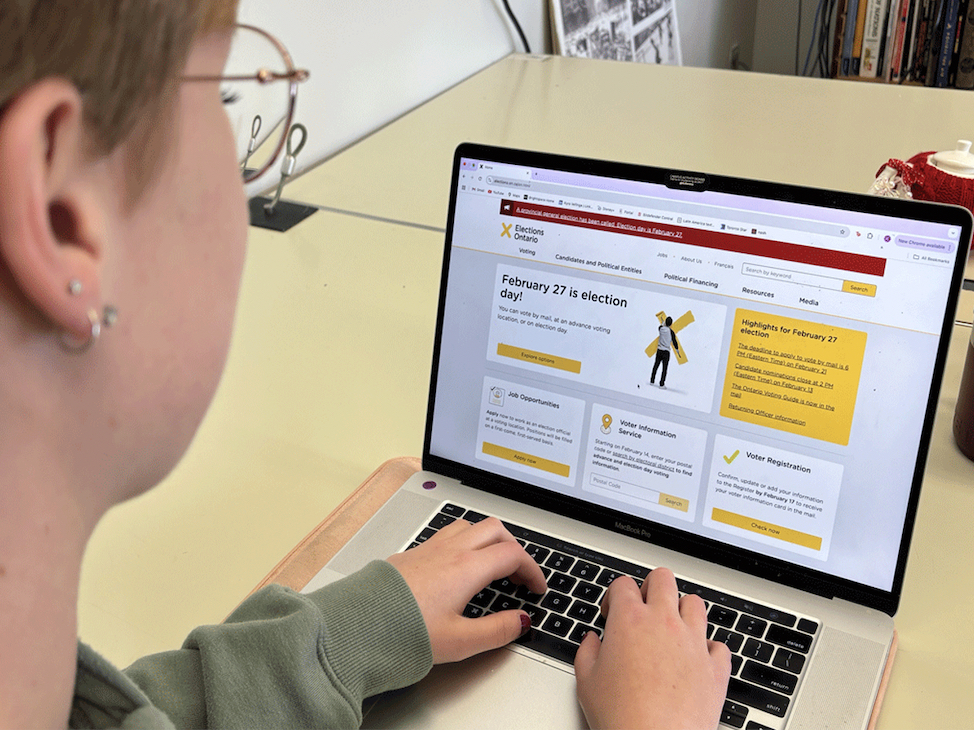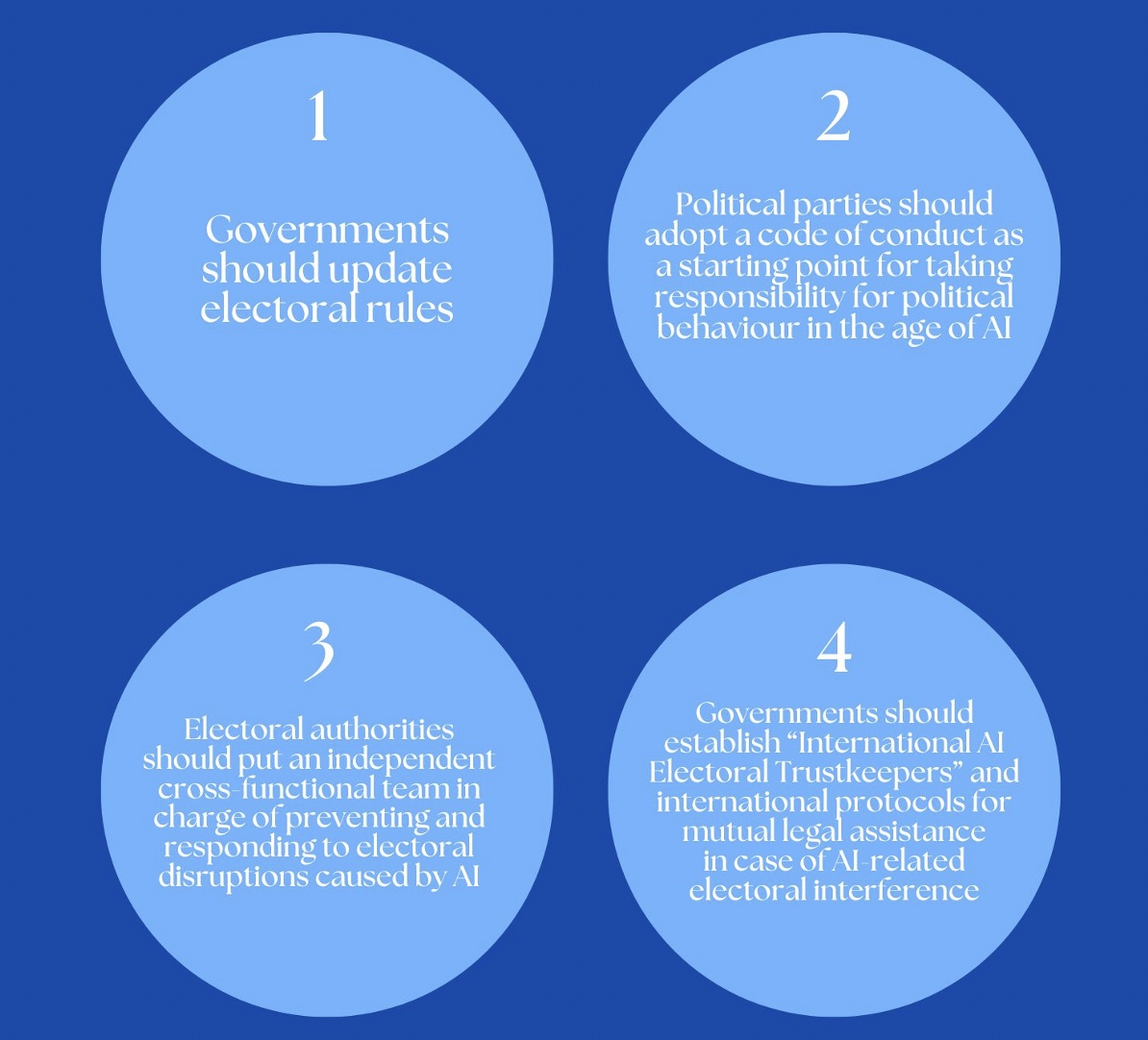Part of the reason Brandon Fairbairn wants to become a teacher is to help a new generation of students learn to combat online disinformation.
“I want to teach students how to properly vet their sources,” said the first-year education student at the University of Ottawa. “Even I’m sometimes susceptible to seeing a post online that has a very provocative title, and my initial reaction is anger or an emotion that’s very powerful.
“As a teacher, I will want to drill into my students that if you see something online that gives you an emotional reaction, make sure you can confirm your sources.”
For Fairbairn – who plans to cast a ballot in the Feb. 27 Ontario election on Thursday – navigating trustworthy internet sources is particularly important when it’s time to vote.
“Part of the importance of living in a democracy,” he said, “is to be aware of the political climate around you.”
Fairbairn isn’t the only one concerned about disinformation in elections.
‘AI in the Ballot Box’
Earlier this month, uOttawa’s AI + Society Initiative and research group IVADO released “AI in the Ballot Box,” a policy brief outlining recommendations for global governments to “safeguard election integrity and uphold democracy.”
According to the brief, global political actors are using artificial intelligence as a channel for disinformation and as a tool to generate content to interfere with domestic and international elections around the world.

Jake Effoduh, a co-writer on the brief and a law professor at Toronto Metropolitan University, said his biggest concern is how AI “poses a threat to democracy.”
“The integrity of elections (and) the integrity of democracy is on the line,” he said. “It might seem like it’s only being used in the media space … but a lot of evidence shows that even way before elections start, AI has already been used.”
AI usage related to previous elections includes deep fakes, synthetic images, audio and video content created to “boost certain candidates” or to “undermine the openness” of others, Effoduh said.
While he noted that Canada hasn’t had “many issues around interference with our elections,” he added that, “we’re not as protected as we think.”
“I believe in our Canadian institutions, but we do not have a lot of technical expertise to ensure that elections run free and fairly from AI’s influence,” he said. “What we’re seeing around the world, I think, calls for us to use a more critical eye to protect our democracy and ensure that what is happening in other parts of the world do not get to replicate themselves here in Canada.”
The brief points to October 2024 local elections in Brazil, where politicians and their supporters used AI-generated images and audio content to boost their own campaigns and undermine opponents.

“Local elections are especially vulnerable to AI’s influence, since local democracies often lack the resources and safeguards to counter its risks effectively,” the brief reads.
In reference to the upcoming Ontario election, Effoduh said: “There’s no election that is immune from vulnerability.”
“The technology has become so proliferated that it’s not only for the big, national elections,” he said.
Despite repeated requests, Elections Ontario did not provide an answer to questions about their protections, if any, against AI usage in political campaigns.
‘No. 1 threat to Canadian democracy’
Sarah Laframboise, executive director of advocacy group Evidence for Democracy, said AI-driven misinformation and disinformation is “the No. 1 threat to Canadian democracy.”
She cited recent activity of suspected foreign interference against Liberal Party leadership candidate Chrystia Freeland as an example.
“Misinformation is dangerous on its own, but when you add that intent, it becomes really dangerous,” she said. “That makes it really relevant . . . given how many elections we have on the horizon.”
The next Canadian federal election must be held no later than October 2025.
“AI in the Ballot Box” suggests four actions for global governments to protect electoral integrity and democracy.
Recommendations include updating electoral rules and restrictions surrounding AI usage in political activity, and establishing a “centralized international platform and unit” for legal assistance in AI-related electoral interference.
“We can’t be controlled by technology,” Effoduh said. “We have the power to regulate AI . . . We can decide where, how and what we should use it for and to what extent and limit AI should have in our lives, spaces and institutions.”
When asked if he thinks the average person could tell what is AI-manipulated, Effoduh said “it depends” on factors like the sophistication of the manipulation and the observer’s level of awareness as “more sophisticated AI-generated content can easily go unnoticed by the average person.”
Fairbairn said his social media feeds are “absolutely destroyed” by an overload of AI-generated photos and videos.
In response, he says he started an Instagram group chat with fellow students for United States and Canadian news updates, where he provides the sources for where he found the information.
While he says he hasn’t noticed any obvious disinformation or AI-generated content related to Ontario’s upcoming election, he’s more frustrated with the lack of available election information, which he thinks could lead people to rely on less trustworthy sources.
“I’ve been calling the major provincial parties and asking them when they’re planning on releasing their platforms. I’ve had to call so many places,” he said, adding that the relatively short campaign period doesn’t leave “enough time for voters to look at major policy documents.
“Voters are going to rely on unofficial sources.”




